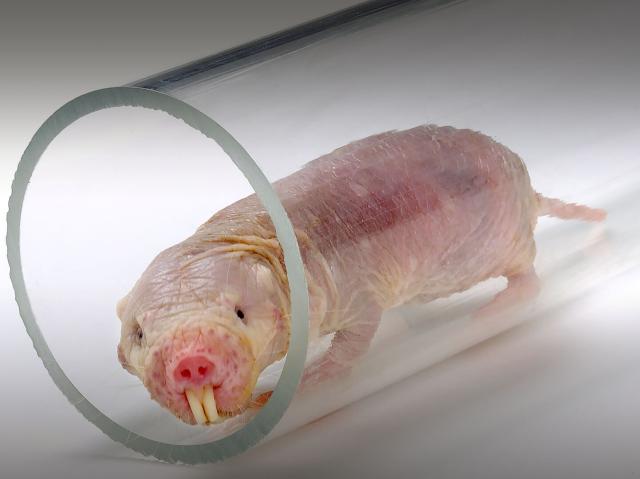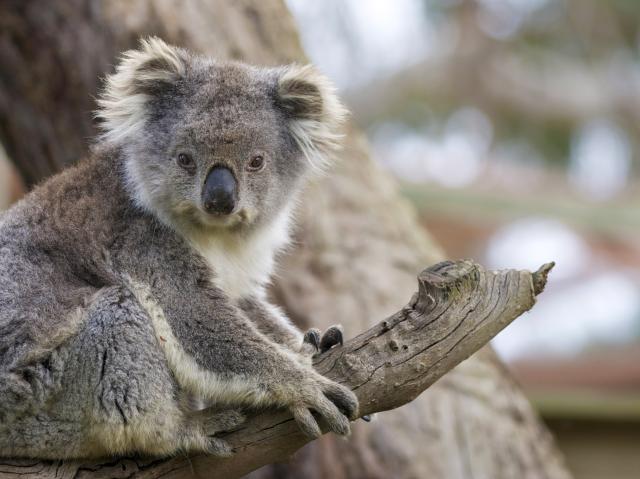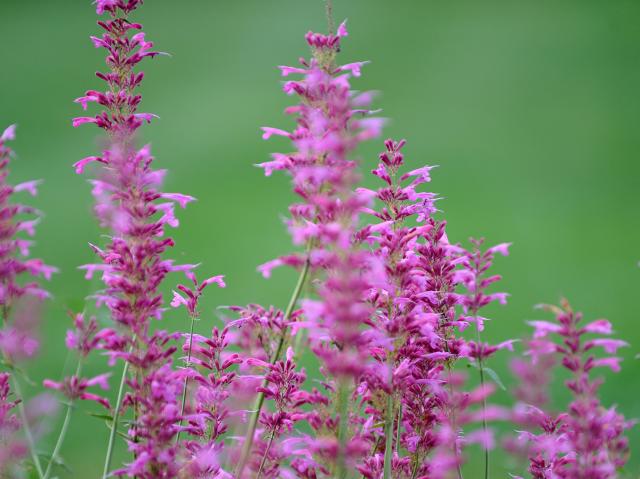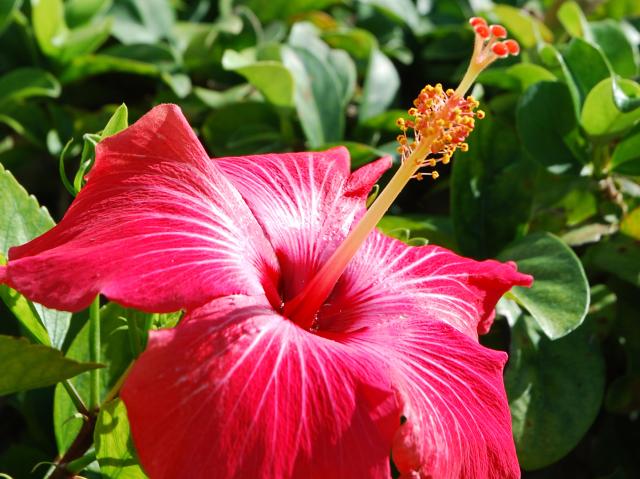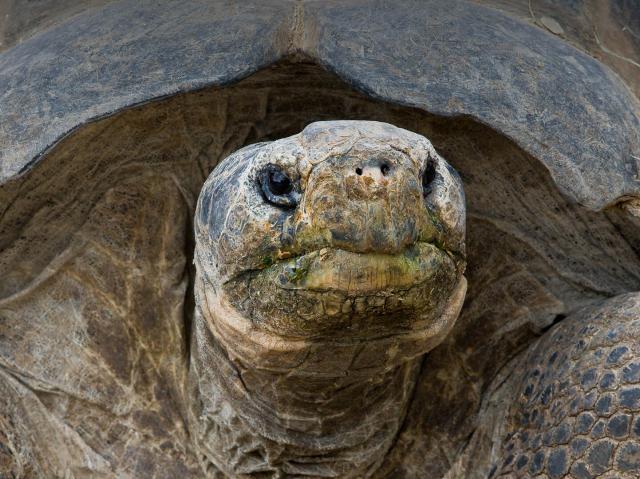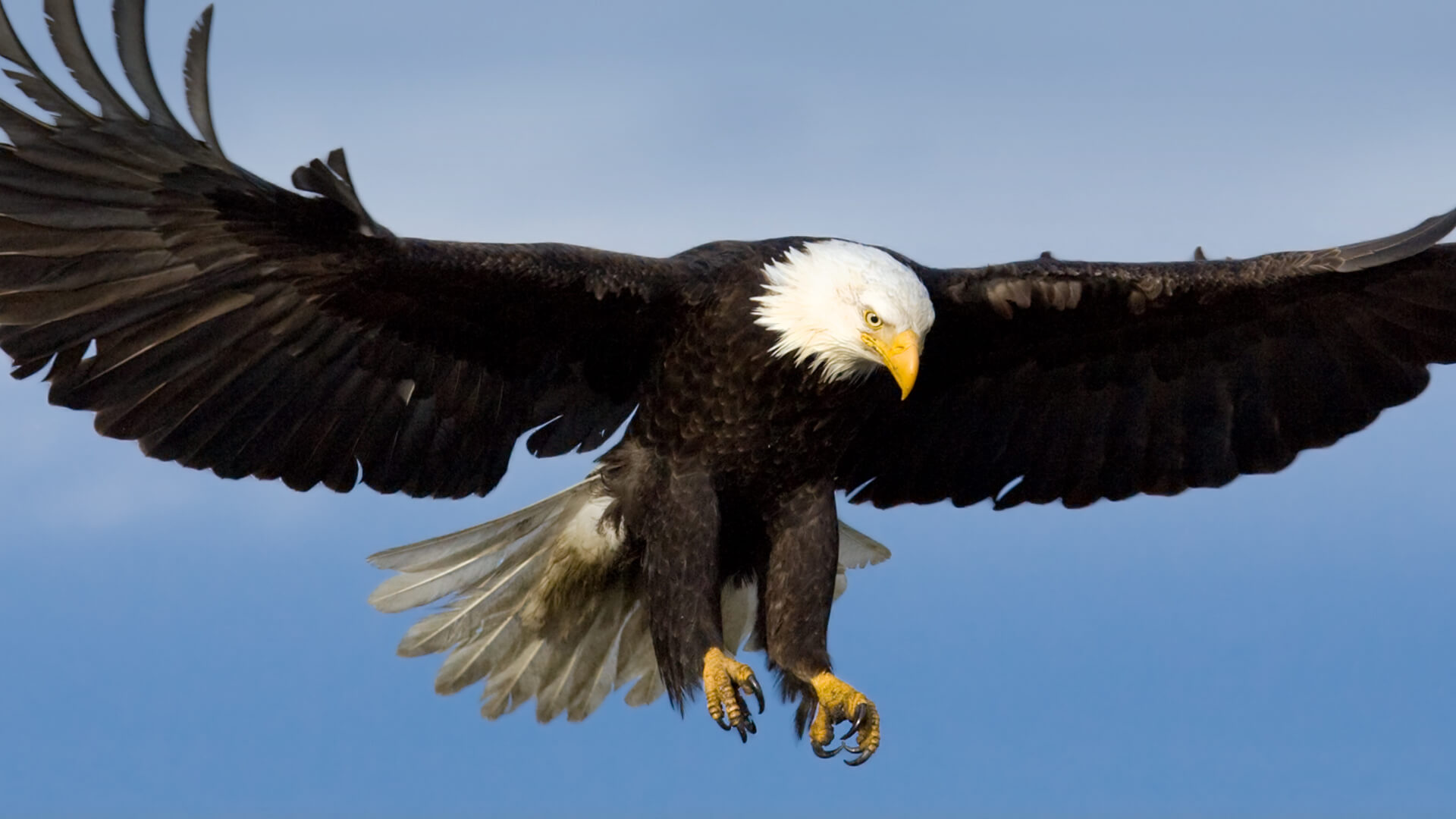
Bald Eagle

- Class: Aves (Birds)
- Order: Falconiformes
- Family: Accipitridae
- Genus: Haliaeetus
- Species: leuccocephalus

ABOUT
The founders of the United States wanted a bird to symbolize a nation they hoped would be strong and powerful, one that could soar high in the sky to represent freedom. They chose the bald eagle, found only in North America. You can see images of bald eagles on coins, stamps, and much more. Interestingly, Benjamin Franklin thought the bald eagle was a poor choice for a national symbol because it sometimes steals food from other birds. He recommended the wild turkey.
Are bald eagles actually bald? No. Their head is covered with short, white feathers. The term bald may be from the Old English word balde, which meant white. Bald eagles are sometimes called American eagles, fishing eagles, Washington eagles, and white-headed eagles. They belong to a scientific grouping of eagles known as sea-eagles or fish eagles.
HABITAT AND DIET
Bald eagles are almost always found near water—on lakes, sounds, or seas. Most live in tundra and forest habitat in Alaska and Canada, but others live in Florida’s mangrove swamps and a few pairs in northern Mexico’s desert regions. In short, the bald eagle is an adaptable bird.
If someone says you have eagle eyes, take it as a compliment. It means you can see things that others might not notice. Bald eagles can see four to seven times better than humans! They are able to see things sharply from quite far away. This, of course, helps them spot their next meal from high in the sky or from a lofty perch in a tree or cliff ledge. But unlike our eyes, an eagle’s eyes can’t move from side to side. So to look around, the eagle has to turn its whole head.
Bald eagles live near bodies of water to be close to their favorite food—fish! No need for a fishing pole—bald eagles come equipped with spiny scales and sharp talons on their toes for grabbing fish. Rough pads on the bottom of each foot also help grip this slippery food.
A hungry eagle waits on its favorite perch until it spies a fish near the surface. It can swoop down on the water and snatch a fish with those special feet. Then, holding tight, the eagle flies back to its nest or a convenient perch in a tree to enjoy its meal. A powerful, hooked beak helps the eagle rip into its food.
Bald eagles are abundant in Alaska and gather in huge groups around Alaskan rivers when salmon are abundant. When fish are scarce, bald eagles hunt rabbits, squirrels, other birds, carrion, and even young deer. They may steal food from other birds or visit human garbage dumps!
At the San Diego Zoo Safari Park, the bald eagles eat a balanced diet of rats, trout, rabbits, or a fortified meat-based product made for birds of prey on a rotating basis.
FAMILY LIFE
It is believed that bald eagles choose a mate for life. To impress each other, a male and female perform a special aerial courtship dance in the sky. They lock on to each other’s talons and tumble and twist in the air. At the last second, they let go—just before reaching the ground! To be successful parents, eagles need to find a home where the fishing is good, with large trees for nesting and little disturbance from humans.
Bald eagles are master nest builders. A pair makes a large nest high in a sturdy tree, or sometimes on the ground if no tree is around. The birds come back to their nest year after year, adding more twigs, grass, moss, feathers, and branches to the original nest until it becomes huge. Sometimes a nest gets so heavy over the years that its supporting branches break, and the nest comes crashing down! Then the eagle pair has to start all over again. The largest known eagle nest was found in Florida. It was 9 feet (2.7 meters) across, 20 feet (6 meters) deep, and weighed over two tons (2 tonnes). Once the nest is to the eagles’ liking, the female lays one to three eggs. Both parents take turns keeping the eggs warm day and night until they hatch.
Eagle mothers lay their eggs several days apart, once a year. The first eaglet (chick) to hatch gets an advantage over its younger siblings, since it has had several days to grow! In fact, the biggest eaglet usually fights for the most food from its parents, and it may even kill its smaller, younger siblings. This is a survival strategy for the eagles—it ensures that at least one chick gets a good chance at living to adulthood. Both parents help care for the eaglets. The mother does most of the chick-sitting, and the father provides the food for the family.
Eaglets are a fluffy, light gray color when they hatch. They turn dark brown just before they leave the nest at about 12 weeks old. Their head and neck feathers don’t turn white until they are mature. Life is rough for young eagles, and most don’t survive their first year.
CONSERVATION
Bald eagles are at the top of the avian food chain, so their only natural enemies are bears and wolves. When their population drops, it means humans have done something to harm the eagles’ natural habitat. Bald eagle populations starting declining in the late 1800s, with many killed for sport. In the mid 1900s, farmers began using pesticides to protect their crops from insects. They didn’t realize that eagles would eat fish from bodies of water that had been contaminated by overuse of the poison.
In a joint resolution to Congress, President Reagan proclaimed 1982 the Bicentennial Year of the American Bald Eagle and noted June 20, 1982, as National Bald Eagle Day. By the time of this resolution, bald eagles had become endangered in 43 states. Fortunately, the use of pesticides is better regulated now, and bald eagles have made a dramatic comeback in some states. However, their story shows how all wildlife is linked together.
Bald eagles are currently classified as threatened in southern Canada and most of the United States by the U.S. Fish and Wildlife Service and were recently de-listed from the its endangered species list. They are still abundant in their northern range, especially in Alaska.
One way to help eagles and other birds is to recycle paper so that there will be more trees left for them to nest in. You can help us protect birds of prey by supporting San Diego Zoo Wildlife Alliance. Together we can save wildlife worldwide.
Sounds
LIFE SPAN
16.5 years on average
Young
Eggs laid: 1 to 3
Incubation: 35 days
Age at fledge: 70 to 92 days
Age of maturity: 4 years
SIZE
Height: 28 to 38 inches (71 to 96 centimeters)
Wingspan: 5.5 to 8 feet (1.7 to 2.4 meters)
Weight: Females, 10 to 15 pounds (4.5 to 6.8 kilograms); males, 6 to 9 pounds (2.7 to 4 kilograms)
FUN FACTS
When a bald eagle loses a feather on one wing, it will lose a matching one on the other. This way it doesn’t lose its balance.
The bald eagle deserves a “hand” for one of its characteristics: its grip strength is 10 times that of the average human.
Most eagles are silent, except during the breeding season. But bald eagles are famous for their harsh, cackling call, which the birds use throughout the year.



